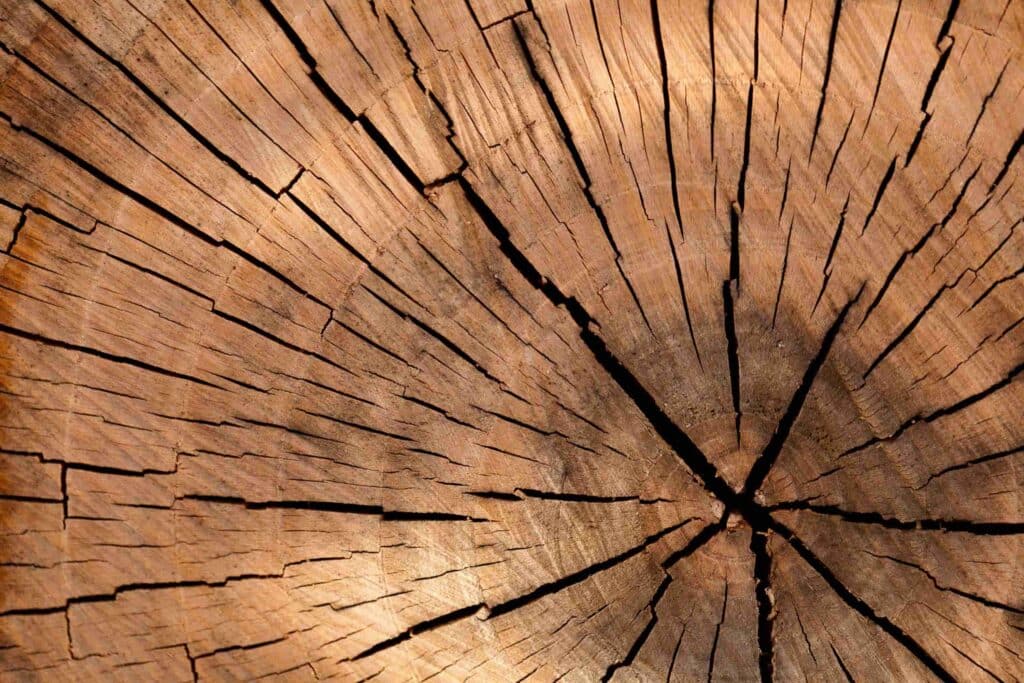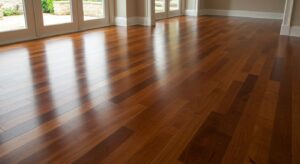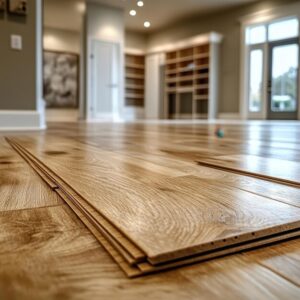Are you planning a project and deciding between hardwood species? Our comprehensive guide focuses on exploring different hardwood species and their characteristics, offering crucial insights into their durability, grain patterns, and aesthetics. Discover how species like oak, walnut, and cherry differ and find the best fit for your flooring, cabinetry, or furniture projects without getting lost in the woods of information.
Key Takeaways
- Hardwood species are chosen for their durability, aesthetic appeal, and versatility in applications such as furniture, flooring, and paneling, with each species offering unique colors, grain patterns, and characteristics.
- Oak, walnut, and cherry are highlighted for their distinctive properties; oak is robust and suitable for various woodworking tasks, walnut is known for its elegant finish and durability, and cherry is valued for its workability and rich tones.
- The decision to select a hardwood species for a particular project depends on factors like durability, aesthetic appeal, and workability, and sustainable forestry practices are critical for responsible hardwood sourcing.
The Essence of Hardwood: Distinguishing Characteristics and Applications
Derived from dense and sturdy deciduous trees, hardwood is highly prized by builders and interior designers for its innate attractiveness and resilience. With a diverse range of colors, grain patterns, and physical properties, hardwood species offer an exciting palette for design and furniture making. Some common applications of hardwood include:
- Flooring
- Outdoor furniture
- Paneling
- Kitchen cabinets
The versatility of hardwood is astounding. Its durability and aesthetic appeal make it a popular choice for a variety of applications.
Different types of wood possess unique natural characteristics that can be enriched or personalized through the use of stains or sealants. Whether you’re crafting a simple piece of furniture or engaged in complex fine woodworking projects, the right wood can make all the difference. While oak and hard maple are commonly known species, that offer a unique blend of strength, beauty, and durability. The key is understanding the wood’s strength, grain patterns, and growth rings to select the right wood for your project.
Hardwood Species Showcase: A Detailed Look

Let’s explore some specific hardwood species within the vast realm of hardwood. Each species has its own unique set of characteristics and colors, influenced by environmental factors such as growing regions. From the fine, uniform texture of Basswood to the coarse texture and interlocked grain of Koto, the rich diversity of hardwood species is truly astounding.
The Majesty of Oak: Versatility Across the Board
We start our species showcase by examining the oak, renowned for its majesty. Renowned for its robustness, longevity, and exquisite grain, oak holds a prominent place among hardwood species.
Oak demonstrates good finishing results when subjected to various woodworking techniques. While oak with a wavy or curly grain may require extra care, with appropriate attention, both slow-grown and fast-grown oak can be finished smoothly, making it ideal for high-quality furniture, flooring, and a range of structural applications.
Walnut Wonders: Dark Chocolate Brown Elegance
Next, we have walnut, a hardwood species that is nothing short of a marvel. American black walnut, known for its moderate density and visually appealing color variations, is highly sought after for high-quality purposes such as crafting furniture and designing architectural interiors.
Walnut demonstrates a moderate level of workability, necessitating certain precautions due to its interlocked grain. Despite these considerations, walnut sands and scrapes well, achieving a refined finish that exudes luxury when filled. It’s this combination of workability, durability, and elegance that makes walnut an excellent choice for a range of woodworking projects.
Cherry Charm: Reddish Brown Allure
To conclude our species showcase, we present the charming cherry. Known for its rich red to dark brown tones and fine, uniform straight grain, cherry wood adds a touch of elegance to any woodworking project. Its medium density and notable shock resistance make it a favorite among craftsmen and hobbyists alike.
Cherry wood presents the following characteristics:
- Moderate durability
- Favorable workability, enabling relatively easy shaping and manipulation
- Great for shaping applications
- Can produce a high-quality finish with some polishing
- Used for high-quality joinery and crafting musical instruments
Cherry wood’s unique characteristics make it stand out among different wood species.
Navigating Wood Grain and Texture: From Fine to Coarse
When embarking on woodworking projects, a grasp of wood grain and texture is indispensable. Wood grain, defined as the direction and arrangement of the wood fibers, plays a pivotal role in determining the appearance, strength, and workability of the wood.
The texture of wood can significantly influence the quality and durability of the final product. Here are some key points to consider:
- Fine grain textures result in a more consistent surface for finishing and carving.
- Coarse grain textures can add a unique visual appeal.
- Understanding the grain patterns, whether straight, cross, or irregular, can aid in selecting the right wood for your project.
Strength and Durability: The Hardwood Advantage
Hardwood inherently boasts of strength and durability. Its slow growth time and higher density contribute to its robustness, making it an ideal material for applications requiring longevity and resilience, such as construction, furniture, and flooring. This dense wood is a popular choice among builders and homeowners alike, often referred to as durable wood.
The strength and durability of hardwood are influenced by a variety of factors, including environmental conditions and the inherent properties of the wood.
Specialty Hardwoods: Exotic and Uncommon Varieties

Venturing beyond the familiar, we turn our attention to some exotic and uncommon hardwood varieties. Specialty hardwoods like Zebrano offer unique properties and aesthetics, with uncommon and appealing color combinations and remarkable resilience.
Beech, yew, and coniferous trees, though less commonly recognized, are appreciated for their light color, straight grain, and shock-resistant qualities, making them suitable for a variety of applications, from furniture to flooring and even boat building. These specialty woods offer a unique blend of beauty and durability that sets them apart in the world of woodworking.
The Art of Wood Selection: Matching Species to Projects

The art and science of choosing the right hardwood species for your project are closely intertwined. Factors such as:
- durability
- cost
- aesthetic appeal
- workability
all play a role in this decision.
The durability of a hardwood species can greatly influence its suitability for various projects. Similarly, the aesthetic appeal of the wood can greatly enhance the overall look and feel of the final product. Understanding these factors helps in selecting the right hardwood species for your project.
Sustainable Forestry and Hardwood Sourcing
Underscoring the significance of sustainable forestry and responsible hardwood sourcing is a must. These practices are essential for preserving natural resources and promoting environmentally friendly practices in the woodworking industry.
Best practices in sustainable forestry encompass replanting of forests after harvesting, selective logging, and thinning, among others. Guaranteeing the sustainability of wood sourcing can be accomplished by opting for wood certified by FSC or PEFC, thereby contributing significantly to sustainable forestry and enhancing transparency in the supply chain.
Choose Floorika Fine Hardwood Today For a Finest Hardwood Species

Floorika Fine Hardwood offers a diverse selection of hardwood species, catering to various project requirements. From Red Oak to Brazilian Cherry (Jatoba), Floorika provides high-quality products at competitive prices, making luxury accessible and ensuring that customers do not have to sacrifice quality for affordability.
Floorika sets itself apart by integrating the following into their hardwood flooring products:
- Luxury
- Sustainability
- Style
- Craftsmanship
- Environmental responsibility
Through a meticulous installation process and expert refinishing services, Floorika guarantees a premium finish and longevity for their products.
Summary
We’ve journeyed through the world of hardwood, exploring its essence, delving into various species, understanding the significance of grain and texture, appreciating the strength and durability, discovering exotic varieties, learning the art of wood selection, and underlining the importance of sustainable forestry. It’s evident that the world of hardwood is as diverse as it is beautiful, offering endless possibilities for creativity and craftsmanship.
Frequently Asked Questions
What are the characteristics of hardwood species?
Hardwood species have broad leaves, produce fruit or nuts, and often go dormant in the winter, distinguishing them from softwood species.
How do I identify hardwood types?
You can identify hardwood types by examining the grain pattern, as hardwoods usually have a more open pore structure compared to smooth softwoods. Additionally, observing whether the wood was plain sawn or quarter sawn can also help in identification.
How many types of hardwood are there?
There are 21 common types of hardwood, including oak and maple, which are popular for their strength, durability, and attractive grain patterns.
Why is knowing different wood types important?
Knowing different wood types is important because each type has its own unique properties, strengths, and weaknesses that can impact the outcome of your woodworking project. Make sure to choose the right wood for the job.
What are some common applications of hardwood?
Hardwood is commonly used for flooring, furniture, paneling, kitchen cabinets, worktops, table tops, and outdoor furniture due to its durability and aesthetic appeal. This versatility makes it a popular choice for various applications.
Featured Photo by Franco Antonio Giovanella on Unsplash









